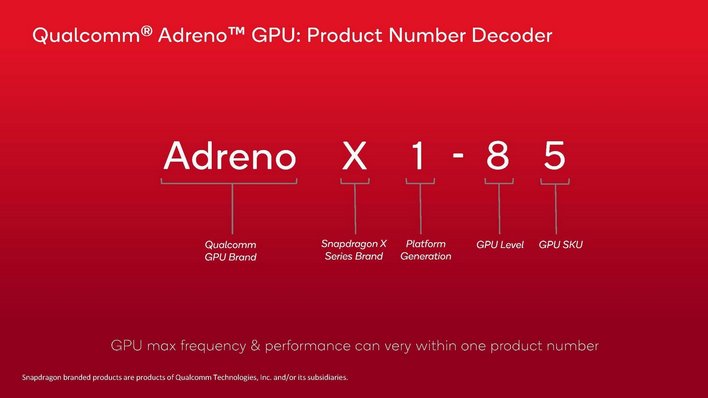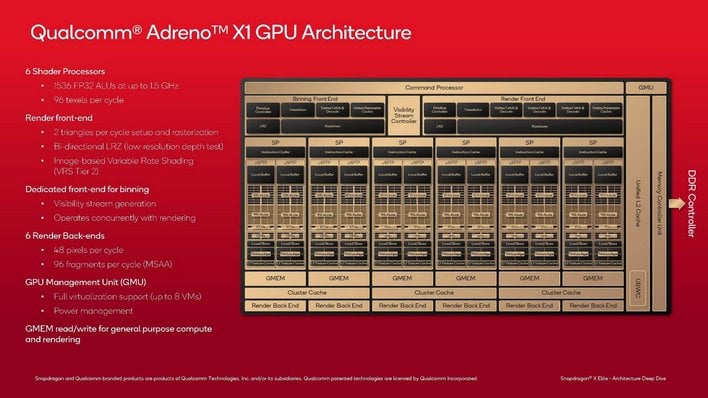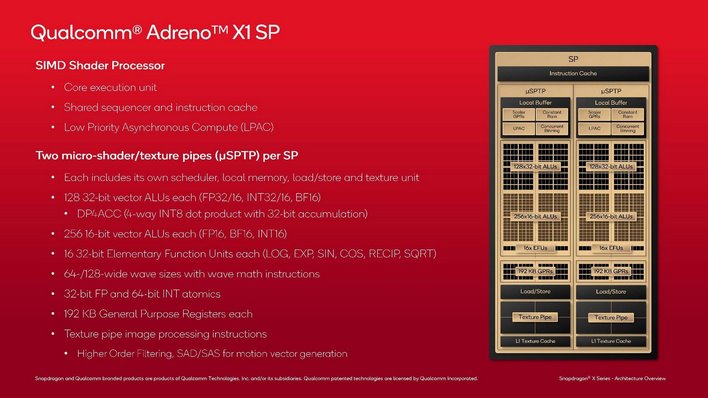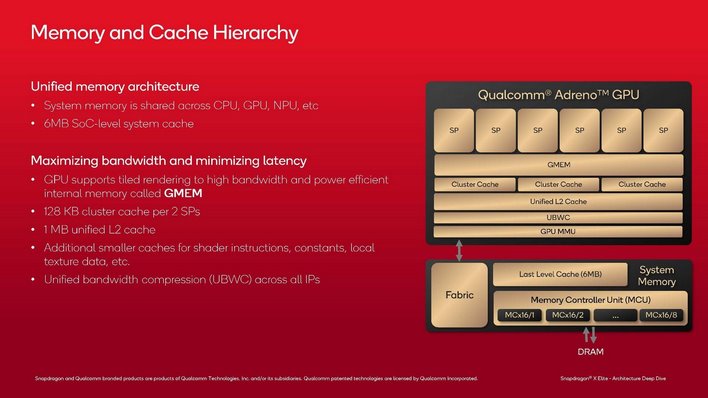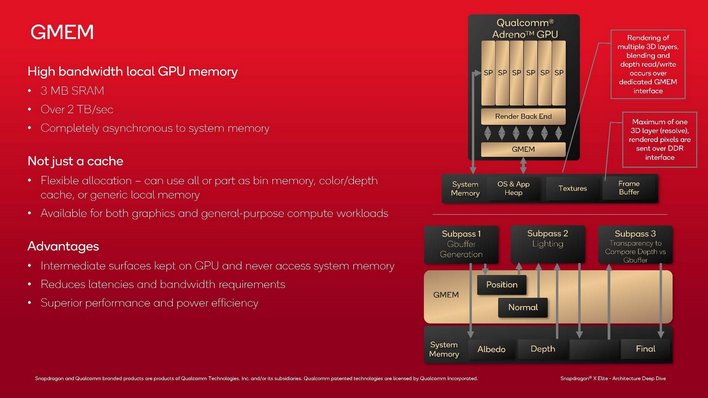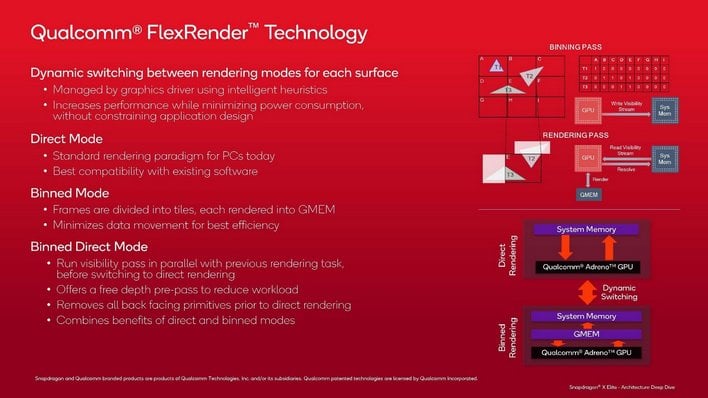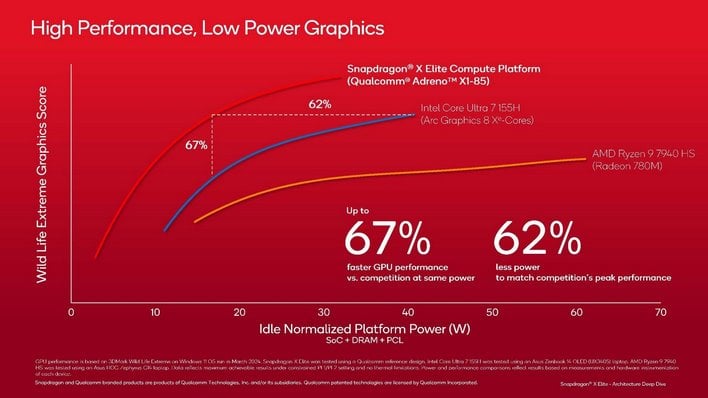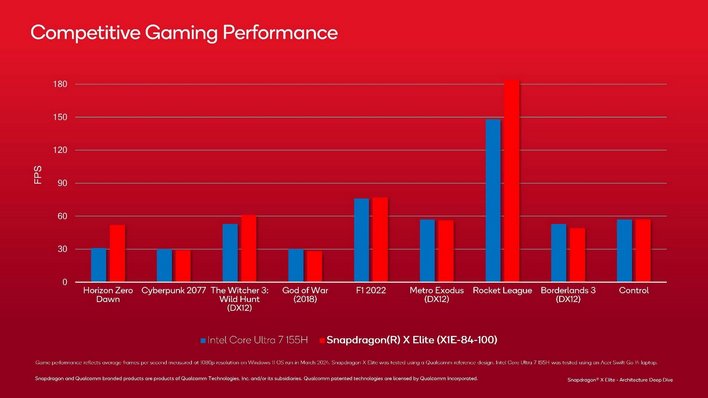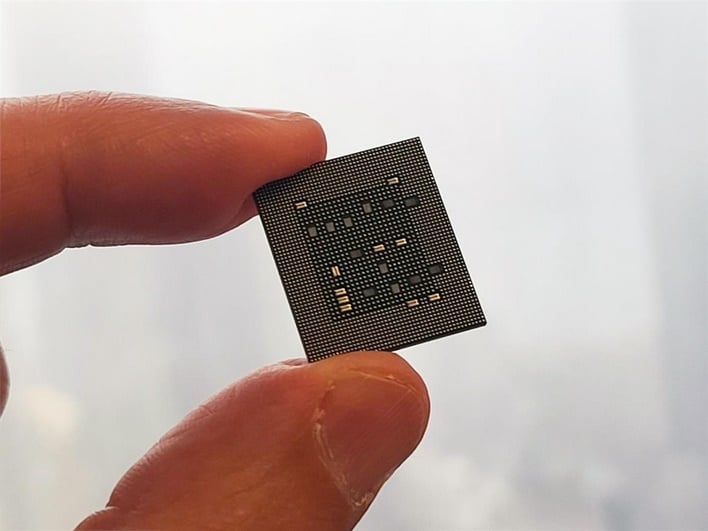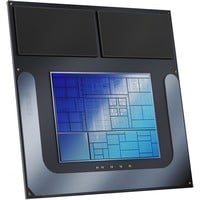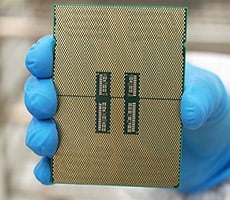Qualcomm Snapdragon X: Oryon CPU And Adreno GPU Architectures Explored
Before we dive into some of the specifics, however, we should explain Qualcomm’s Adreno X1 naming convention. Similar to the Snapdragon X SKU naming, the Adreno X1’s attempts to explain the series, product generation, GPU level and SKU. The example above shows the Adreno X1 is the first generation is the Snapdragon X series brand, with a GPU level of 8 and SKU of 5. The SKU number is simply a product designation, but the GPU level reflects expected performance – obviously higher is better.
The Adreno X1 GPU: Pushing Snapdragon X's Pixels
The Adreno X1 series GPU will offer up to 4.6 TFLOPS of FP32 compute performance with a peak fillrate of 72 Gigapixels/sec. The design supports DirectX 12.1, including Shader Model 6.7 and DirectML with accelerated metacommands. DirectX11, Vulkan 1.3, and OpenCL are also supported natively within the drivers.
In its full configuration, the Adreno X1 features 6 Shader Processors (SP), with a total of 1,536 ALUs operating at up to 1.5GHz, that can handle 96 texels per cycle. The render front end supports 2 triangles per cycle (setup and rasterization), with bi-directional LRZ draw order independent depth rejection, and support for tier-2 Variable Rate Shading. Each SP also features 6 render back-ends (or ROPs) that can handle 48 pixels per cycle, and 96 fragments per cycle for MSAA. There is a GMU present in the design, which is essentially a RISC processor embedded in the GPU, which controls voltage, clocks, manages and power, etc., with full virtualization support for up to 8 VMs.
The features and capabilities of the individual SPs are outlined in the slide above. There are two pipes per SP, each with 128 32-bit vector ALUs and 256 16-bit vector ALUs, each with support for an array of data types. There are also 16 32-bit EFUs (Elementary Function Units) for various math operations. 32-bit floating point and 64-bit integer atomics are supported and each pipe features 192KB General Purpose Register.
Like most mobile processors currently available, system memory is shared across the CPU and GPU, and the NPU with the today’s latest platforms. To make the most of the available bandwidth, the Adreno X1 supports tiled based rendering and some internal memory, dubbed GMEM. In addition, there’s 128KB of cluster cache per pair of SPs, with 1MB of unified L2 cache, along with some smaller buffers and caches for shader instructions, textures data, etc.
The GMEM itself is comprised of 3MB of SRAM, with massive bandwidth of over 2TB/s that operates asynchronously from system memory. The GMEM is configurable and can be used for a variety of things, from color or depth cache, to generic local memory, and it’s available for both graphics and compute workloads. Having this super-fast memory repository right on the GPU, minimizes GPU access to system memory, which ultimately maximized effective total bandwidth, improving performance and efficiency.
Qualcomm is calling the Adreno X1’s tile based rendering, FlexRender Technology. FlexRender supports a variety of modes, and allows for dynamic switching between those modes for each surface. Direct mode is most compatible with today’s software, and is similar to techniques used by other GPUs. In Binned mode, frames are sliced into tiles, and each tile is rendered into GMEM. And there’s a Binned Direct mode with combines the features of both.
Adreno X1 GPU Expected Performance
In terms of performance, Qualcomm once again claims superior performance and power efficiency versus competing offerings from Intel and AMD. GPU performance is reportedly so good, that even with non-native games, performance is on-par with or significantly better than the Arc graphics engine available in the Core Ultra 7 155H. We’ll know for sure soon enough, though, with Snapdragon X machines due to hit store shelves next week.
The Snapdragon X Is Almost Here And It's Looking Strong
Virtually all of the information and data released by Qualcomm to date has painted and overwhelmingly positive picture of the Snapdragon X series. Performance versus other mobile platforms at similar power levels appears to be class-leading on multiple fronts, and assuming the Snapdragon X’s efficiency is as good as Qualcomm claims, machines built around the platform should offer all of that performance, with impressive battery life as well.Until we’ve got a complete set of benchmarks and experience retail-ready Snapdragon X hardware – which won’t be long now -- we will remain cautiously optimistic. Microsoft and a number of ISVs have been making massive headway optimizing software for Arm-based processors, and Microsoft’s vote of confidence making Qualcomm the exclusive partner for the first wave of Copilot+ branded AI PCs speaks volumes.
Anytime a new platform arrives to challenge incumbents in a high-tech market, there are bound to be some growing pains. But many of the initial indicators regarding the Snapdragon X series are extremely positive, and it’s looking more and more likely that Qualcomm is going to seriously disrupt the PC space in the coming months and years. It’s certainly going to be interesting to witness how this all shakes out when competing next-gen architectures arrive from Intel and AMD, and other players enter the Windows on Arm space next year.

